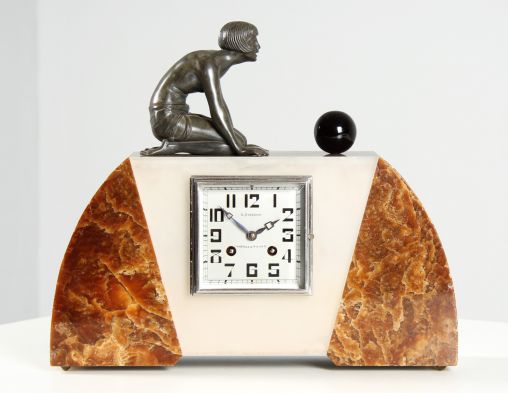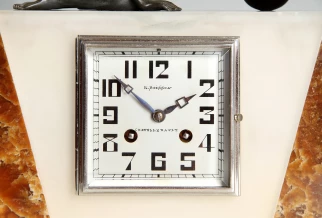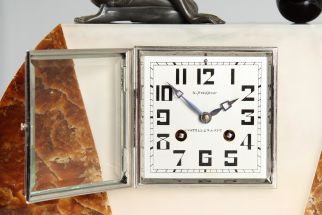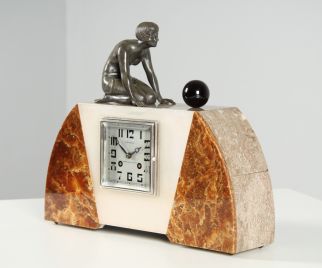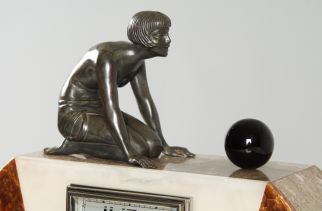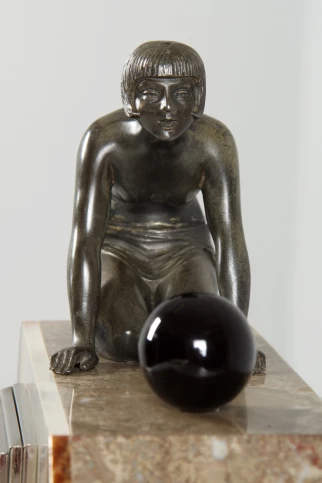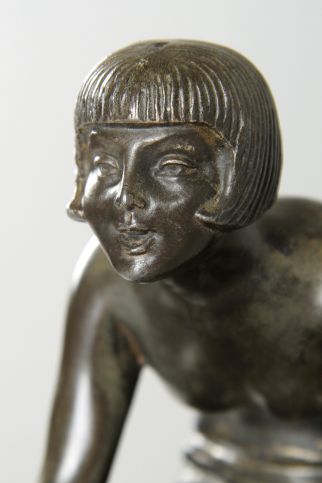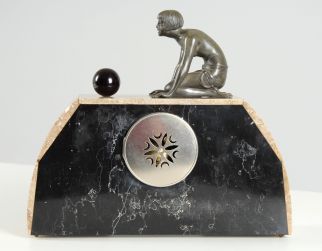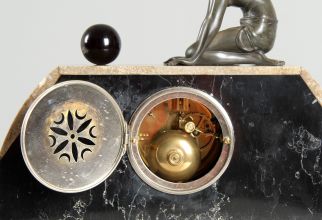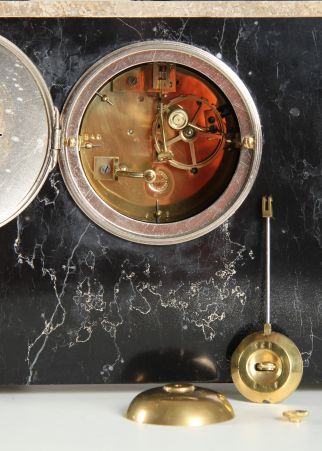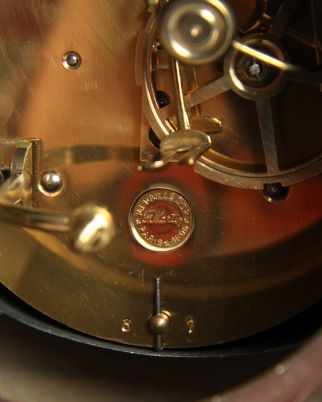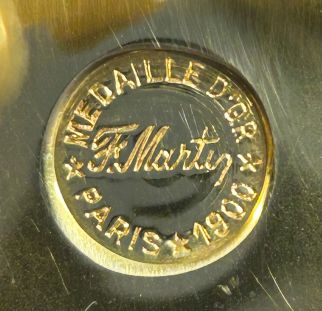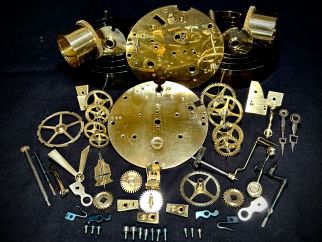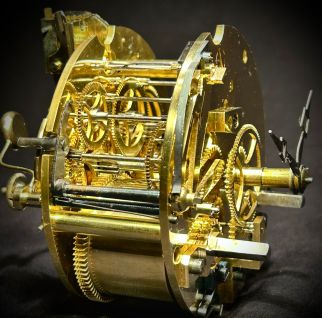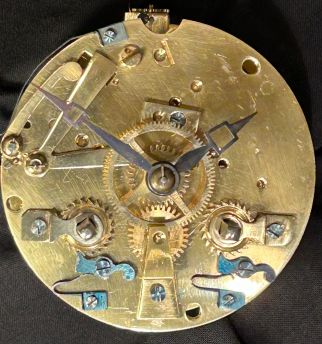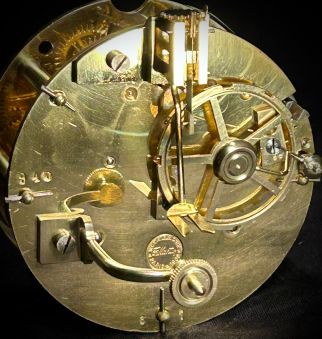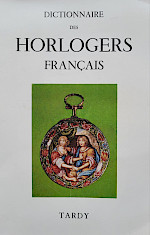Art Deco mantel clock
France
Marble, metal
Art Deco around 1930
Dimensions: H × W × D: 32 × 37 × 11 cm
Description:
Representative French pendule in an expressive design from the high phase of Art Deco.
The case is made of cream-coloured and brown marble with polished front surfaces and clear geometric contrasts. The clock is crowned by a finely modelled statuette - a kneeling dancer with a short haircut, next to whom lies a black ball. This characteristic scene from the 1920s was inspired by the ideal of the modern woman of the time, who symbolised elegance, emancipation and self-determination at a time of social change. The female body was no longer idealised in the classical sense, but re-staged in movement, sport and dance
The silver-framed dial has a square design and features the Arabic numerals typical of Art Deco in block-like typography. The hands, also typical of the period, complement the aesthetic of the clock, which is characterised by geometric contours. The dial bears the signature H. Boisson, Chatellerault, probably the signature of a jeweller or clock dealer from the French province of Poitou at the time.
If we open the hinged cover on the back, we see the original pendulum movement from the Marti manufactory, one of the most important French movement manufacturers of the late 19th and early 20th centuries. Marti supplied numerous case manufacturers with high-quality movements. The "MEDAILLE D'OR" award was presented to Marti at the Paris World Exhibition in 1900 and was embossed on movements until well into the interwar period.
The clock runs for 8 days at full winding and strikes a bell every half hour.
Condition:
Very good condition with slight signs of wear commensurate with age. The movement has been completely dismantled, cleaned and overhauled. It runs perfectly and reliably.
Price: 1850,- €
Compare the following literature:
Karl Kochmann - Clock and Watch Trademark Index S. 260
Tardy - Dictionnaire des Horlogers Français S. 435
Article found under: Clocks
Add to shopping cartVideo Art Deco Pendulum
Also interesting
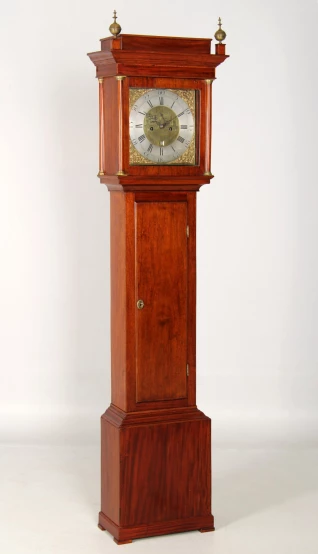
George III grandfather clock - James Pike
England (Newton Abbot)
Mahogany
circa 1790
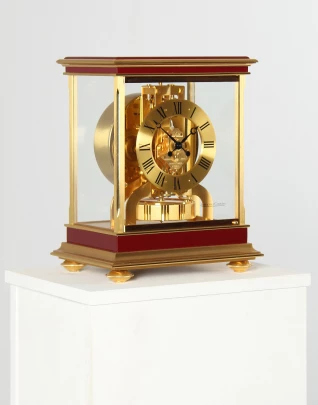
Jaeger LeCoultre - Atmos Royale Ref. 5855
Switzerland
Gold-plated and lacquered brass
Year of manufacture 1980
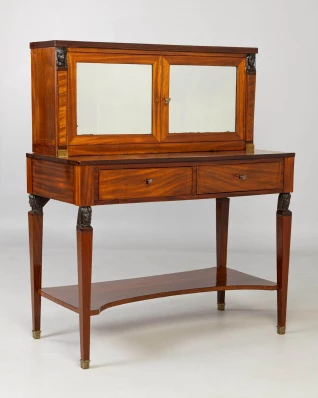
Retour d'Egypte console table with mirror top
England
Mahogany, marble, etc.
early 19th century
